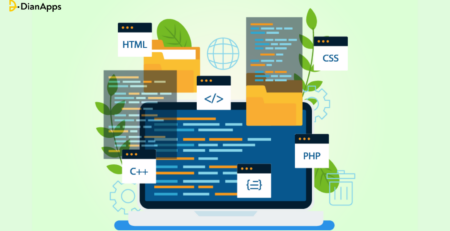E-commerce Website Development: Strategies and Solutions for Businesses
As of right now, there are over 26.5 million eCommerce websites worldwide, and new ones are joining the market daily. What does this mean now? It demonstrates how difficult it is to create eCommerce websites in a saturated market.
But there’s a catch! You can stand out from the crowd and achieve big things in the future if you have the correct combination of tactics and eCommerce development solutions.
The process of creating an e-commerce website’s technical features. Such as how it works, takes payments, reacts to user experience, and looks is known as e-commerce website development.
The web development services sector is expected to be valued at $11 billion in 2022. Enables business owners to create user-friendly websites and address their most urgent e-commerce problems, which may include:
- Choosing the appropriate functionality and features for your e-commerce operation.
- Figuring out which e-commerce framework would be most appropriate for you.
- Incorporating e-commerce into an already-existing website or framework.
Let’s dive in.
Choices for Developing an Online Store:
When it comes to constructing an online business, you are probably going to encounter three choices:
Create a website from the ground up using open source.
- Tailor a software-as-a-service (SaaS) offering.
- Utilize MACH architecture’s power
- Construct it from the ground up.
Build your website from scratch (aka open source)-
Open-source e-commerce platforms are solutions in which you can modify all aspects of the code. Meaning you can build your website from scratch with few to no customization limits.
But bear in mind that when you choose an open-source solution. Your company is often in charge of things like web hosting, security vulnerabilities, PCI compliance, manual patching, and upgrades.
Because of this, open source may seem excessively complicated, costly, and tech-heavy to certain firms, especially as their company expands and develops more sophisticated.
Tailor a SaaS Solution-
Lack the funds or coding knowledge to create a solution from the ground up?
Introducing SaaS e-commerce:
SaaS is a type of subscription-based software that can be hosted in the “cloud” and is developed and maintained by an outside source. The platform enables you to simply rent the platform, with the platform provider handling all of the other associated costs of managing your software, like hosting, PCI compliance, security, and product upgrades, in place of having to construct and develop a custom solution yourself. SaaS solutions allow firms to enter the market swiftly and at a reasonable cost because of this.
Some e-commerce platforms, sometimes referred to as “open SaaS,” even integrate open-source software with the benefits of SaaS.
For mid-market and enterprise firms, DianApps is a top website development company. Our open API gives merchants the ability to develop unique integrations and features more quickly, much like an open-source platform, while also providing them with all the advantages of a SaaS platform, such as being hosted on DianApps’ behalf, a cheaper total cost of ownership, and a quicker time to market.
MACH (Microservices, API-First, Cloud-Native, and Headless):
The frontend storefront and backend app development server-side have been integrated into a single monolithic configuration for decades in the conventional e-commerce architecture.
A monolithic solution might be a wise decision for small and mid-sized (SMB) firms with modest needs, but as your company grows and demands more complexity—for example, by establishing several websites or branching out into new areas—it can pose certain problems.
The answer?
MACH structure:
MACH (microservices, cloud-native SaaS, API-first, and headless) is a set of best-of-breed building guidelines for corporate software tech stacks. With MACH, as opposed to monolithic architecture, you may select the technology that best suits your future roadmap and business requirements.
Microservices:
Microservices are tiny applications that are assembled to accomplish a single, highly specialized purpose. Each one utilizes a distinct code base and is individually developed, updated, deployed, and maintained.
API-First:
The application must be designed with application programming interfaces (APIs) at its core as they enable connections and communication between two or more services or apps to deliver content.
Cloud-Native:
Utilizing all of the cloud’s and SaaS technology’s features, a cloud-native application manages, keeps an eye on, and maintains the technology while licensing it through subscription services.
Headless:
The separation of a website’s frontend display layer from its backend e-commerce functions is known as headless commerce architecture.
How Do I Choose the Right E-commerce Website Developer?
Next, we’ll examine the duties of an e-commerce developer and the reasons their qualifications should match your requirements for e-commerce site design.
The best way to ensure that your website provides a better user experience is to work with an e-commerce web development business that has expertise in designing and/or developing for e-commerce.
If your platform has a robust website development company, similar to DianApps, you may be able to locate e-commerce website development services that are up to date on the most recent e-commerce best practices and can create a website that will impress your clients and increase your conversion rate.
Recognize the strengths of several developers-
While some developers thrive at backend modification and technical execution, others are fantastic at using a beautiful front end to bring your brand to life.
Make sure you are aware of the advantages and disadvantages of the developers you are considering for your online business.
Even while some engineers are proficient in both frontend and backend programming, they usually choose to concentrate on one of them. Verify that the developer you select has the abilities you require.
When creating an eCommerce website, keep the following important factors in mind:
- Web security
- PCI compliance
- SEO Various channels and payment methods
- CMS integration
- Reactivity on mobile devices
- Design of shopping carts
- Product filtering
Concentrate on the Option You Need-
It won’t be possible to hire a website development company until you have a clear idea of what you want from your eCommerce storefront and what abilities are required to make it happen.
A backend developer could be more important than a designer if the eCommerce development solutions you’re utilizing rely on an open-source framework (though you’ll probably need both).
You could require more front-end work than anything else if you’re utilizing a SaaS platform, however, you might also want someone with experience developing APIs. Although the majority of SaaS systems provide a sizable selection of apps with pre-built connectors, specialists are best suited to manage further complexity.
Functionality To Consider When Developing An E-commerce Website-

Your company model and particular requirements will determine what features and functionality you need in your E-commerce site.
Make a list of the characteristics your e-commerce website must have based on the objectives you have specified. These have to be in perfect harmony with the lifespan of your customers.
For instance, a small or startup company might not require multi-currency capability, while a cross-border shop would find this to be an essential feature.
Working from general to specialized will help you quickly identify the functionality you require for your shopping cart.
- Enumerate every standard need, including the recommended payment gateways and marketplace interfaces.
- Include features that are necessary for your company, such as an automated shipping rate and sales tax computation.
- Sort all the nice-to-have features into a list of priorities of 1 to 5, where 1 is an essential feature that will drive revenue and 5 is a convenient add-on to improve the efficiency of your business.
Responsive Design:
According to Statista, sales of mobile commerce will account for more than 10% of all retail sales in the United States by 2025. This is an increase of 7% from 2018.
You’ll need a website that supports responsive, mobile-friendly web design as more and more people purchase online using mobile devices. Alternatively, you may ask your web developer to make a mobile application.
The objective is to ensure that your website offers a consistent purchasing experience regardless of the device being used to access it—a desktop or a mobile one.
Fortunately, fully responsive themes are available for free and paid on the DianApps theme store. Our Stencil theme platform is used to create expertly designed and built themes that are tailored for various industries and product catalogs.
SEO-Friendly Qualities:
SEO is a crucial component of website design and a fantastic content distribution strategy.
A high Google search engine ranking for pertinent keywords will assist attract interested web searchers to your website. SEO traffic can be more cost-effective since it can naturally bring you high-intent, likely-to-convert potential customers.
Site Velocity.
As per Google research, the likelihood of a bounce rises significantly for every additional couple of seconds that a page takes to load.
Since Google utilizes site speed as a ranking criterion, websites with a fast load time also benefit from SEO. For this reason, you should work with e-commerce website developers. Who are skilled at optimizing your online store to make it not just aesthetically pleasing and useful, but also quick to load.
CMS:
An e-commerce website cannot function without a content management system (CMS). As it centrally stores all dynamic material, including images, blog entries, and other content blocks.
Your e-commerce website development services will automatically update as you add new material or make changes to existing content when you use a content management system (CMS). In this manner, you may regularly update your website with fresh material that promotes your goods.
Product Management:
Consider your preferred e-commerce platform.
They likely provide several product variations, promotions, and discounts as needed, and they often carry the things you desire in stock.
Make sure your e-commerce site has the features required to add, change, and track inventory. While you’re building it, so you can reliably provide clients with the goods they desire.
Checkout and Payments:
Offering just one payment option is no longer appropriate for e-commerce companies in the era of PayPal, Apple Pay, and mobile wallets.
Your e-commerce platform has to be able to interface with different payment gateways since research indicates that nine out of ten customers make decisions faster and even spend more when presented with flexible and smooth payment alternatives.
Fortunately, you can create a unique checkout for your online store and even provide a one-click checkout with applications like Bolt if you are a DianApps merchant.
Security:
You must manage sensitive data, like credit card numbers, customer phone numbers. And other payment information, carefully while developing an online business.
To accept payments, you must adhere to PCI Compliance rules; otherwise, you run the danger of paying fines, losing your ability to take payments, losing the trust of your customers, and suffering additional financial repercussions from fraud.
However, some systems may not give enough, even with their minimal offerings. While some systems have an SSL certificate, adequate security may need extra in-house infrastructure expenditure or third-party software.
Integrations:
Not a single e-commerce platform will have every feature you could ever need built-in. Make sure your platform has plugins and integrations with the solutions you need so you may personalize your website development services.
How would you like the back office to function? Make sure the platform you select has the integration you require because many companies place a high priority on integrating their e-commerce solution. With pre-existing ERP, OMS, PIM, or CRM systems.
Which types of digital marketing are you using? Utilizing a client data platform might be beneficial if you want to provide a customized experience. Examine your data’s possibilities so you can determine the capabilities of each e-commerce program.
Is it possible to combine your email marketing system with data? Additionally, you might want to think about SMS marketing or on-site chat, as well as whether you need to interface. With social networking platforms or online retailers like Amazon.
Marketing Strategy:
Start creating an e-commerce marketing plan as soon as you start working on your online business. This will assist you in defining the layout of your website and identifying any features you might want.
For instance, you might want to include social sharing buttons on your website. If you plan to use social media channels for advertising. Alternatively, you could wish to create a mobile app or include push notifications if your strategy heavily emphasizes mobile commerce.
Wrapping Up
The platforms you have access to and the difficulties of starting an e-commerce firm vary. At some point throughout your company’s lifespan, you can discover that you want more web development assistance. Regardless of whether you begin with a turnkey solution or a sophisticated platform.
You’re ready to get started now that you understand the purpose of a web app developer in your e-commerce launch and maintenance process. The features you should take into account while assessing tech requirements, and the preparations you should make before launching.
DianApps has a strong network of service and solution experts available to help with any queries you may have.




